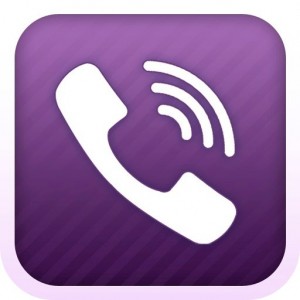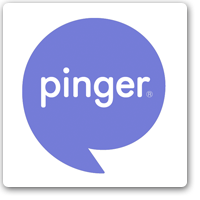Posted November 11, 2013
By STEPHANIE PARRA
Before the invention of the mobile device, communicating with those back home while abroad meant purchasing postcards and stamps or expensive phone card calls.
Along came the invention of the modern cellphone in the early 1990s, and eventually expensive cellphone calling and messaging plans developed. But since then, the advances that have come forth allow for free communication and even for free communication internationally. While some of these applications for mobile phones have different standard fees, rates and policies for phone calls, all of them do permit for free text messaging from user to user.
For instance, sophomore Fernanda Paguaga, who is studying abroad in Rome, Italy, this semester, uses an international calling plan so that she can call and text her family. Though she set it up before leaving the U.S., she mentioned that the rates have turned out much higher than she anticipated.
“I used an international calling plan so I can call and text my family,” Paguaga said. “The plan also includes data roaming, but it’s crazy expensive. Twenty-five dollars for every 100 megabytes; I’ve used up $200 of it already and decided I need to stop.”
In order to minimize communication costs, Paguaga has turned to free mobile applications.
“Now I’ve disciplined myself to only using Wi-Fi, cause it’s available at my apartment, school and most cafes,” she said. “I use Viber, it’s like WhatsApp, but you can also call for free.”
Paguaga also mentioned that several of her friends in her study abroad program are turning to communicating with similar programs that run on Wi-Fi, in order to save money.
“They use WhatsApp, Skype …” she said. “Most people don’t have an international plan and rely completely on Wi-Fi now.”
Viber
Viber, founded in 2010 by Viber Media, allows users to send free text messages, photo messages, video messages and locations. In addition, users can make free HD-quality calls to other Viber users. The application boasts more than 200 million users in nearly 193 countries. Most recently, the application introduced new platforms, including “stickers” and emoticons.
The Viber application is available for users with iPhones, Androids, Windows Phones and Blackberry devices. The device works with both Wi-Fi and 3G/4G connections.
For UM sophomore Jordan Coyne, using Viber is essential. This summer, she used the app to communicate with her cousin while she was abroad in Paris.
“Viber helped us save a lot of money,” Coyne said. “I speak to my cousin almost every day, even when we’re not living close to each other.”
Coyne said she loved the app so much that she’s recommended it to several friends.
“Viber is definitely something I can’t stop talking about with my friends,” Coyne said. “We’re all using it now, even to communicate with each other in the same city.”
Paguaga expressed similar remarks.
“Viber is my favorite way to just send text and cute stickers,” she said.
For more information about Viber, visit viber.com. For questions or feedback, email the company at support@viber.com or visit helpme.viber.com. For updates, visit the company’s Facebook page at Facebook.com/viber or follow them on Twitter at @Viber. Check out an FAQ put together by the company here, viber.com/faq.html. The application is free and is available for usage worldwide.
Pinger and Textfree
Pinger is another application that allows users to text, send pictures, make phone calls and even leave voice mails – all free of charge. The most interesting thing about Pinger is that, according to its website, it is building the planet’s first free device and carrier independent global network.
The application, available to iPhone, Android, Windows and Macintosh device users, allows users to select their own phone numbers based on their zip code. In addition, the users are able to change their zip code if they do not wish to use a local cell phone number.
Pinger, Inc., a company run by communication industry experts, funds the application.
The application was founded on December 2007, and since then it has included new facets to allow users without a mobile device to communicate with mobile device users.
In 2010, for example, the company expanded to include Textfree, a separate application that allows users to text mobile devices from their laptops or tablets.
Both applications are free, and are available in numerous languages including English, Dutch, French, German, Italian, Portuguese and Spanish.
For more information about Pinger or Textfree, visit pinger.com or pinger.com/tfw, respectively. For updates, follow the company’s Twitter page at @Pinger. The application is free and is available for usage worldwide. The application, though free for users, is funded by advertisements purchased by the company.
textPlus
TextPlus is an app similar to Pinger. It allows users to call and message each other, and is available for iOs, Android, Windows and Nokia smartphone users. In addition, the application allows for iPad, iTouch and Kindle Fire tablet users to communicate with other mobile device users.
For senior Carlos Mella, textPlus is an essential application on both his cellphone and tablet.
“I like textPlus because it lets me talk for free with my family members back home in the Dominican Republic,” he said.
Mella has been using textPlus since it became available in 2009. He’s recommended it to all his friends, and though he’s tried using other applications, he claims textPlus is his all-time favorite.
Unlike Viber and Pinger, however, textPlus offers different calling rates in exchange for the promise of better cell service.
TextPlus is available to download for free and is available for usage worldwide. For usage rates, or more information, visit textplus.com. For updates, follow the company’s Twitter page at @textPlus.
Launched in 2009, WhatsApp messenger is a one-of-a-kind. WhatsApp allows mobile device users to use the same Internet data plan that is originally used for email and web browsing. Similar to BlackBerry device’s famous BlackBerry Messenger, WhatsApp allows users to keep track of the last time other parties were “online” or saw the messages delivered.
The messaging app is available for iPhone, Blackberry, Android, Windows Phone and Nokia, and allows users to message any user connected to the application. WhatsApp Messenger also gives users the ability to create groups, send images, videos and audio messages.
The application was created in 2009 by two former employees of the Yahoo! corporation. As of August 2012, the application was handling nearly ten billion messages per day. In June 2013, the daily record skyrocketed to 27 billion messages.
In an article that appeared in the Financial Times, WhatsApp has reportedly “done to SMS on mobile phones what Skype did to international calling on landlines.”
The service is free for the first year and then costs $0.99 each year.
As of August 2013, WhatsApp has nearly 300 million users.
Senior Amilynn Soto, who plans on studying abroad in Prague in the spring, mentioned that she would be using WhatsApp in order to communicate with her family and friends.
“I’ve used it before,” she said. “I had a boss that used it while he worked internationally, so I think it’ll work for me too.”
WhatsApp is available to download for free and is available for usage worldwide. For more information, visit whatsapp.com. For updates, follow the company’s Twitter page at @WhatsApp.



